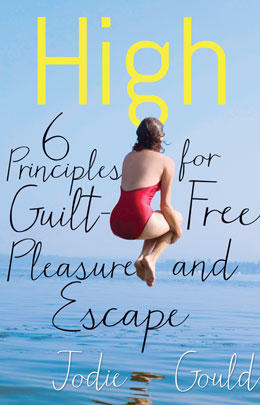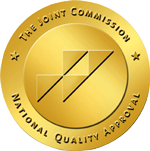
"Taking breaks is biologically restorative, but naps are even better.."

Other titles you may like.
Visit Recovery Road to view and listen to all the episodes.
Episode 23 -- July 2, 2020
Sleep and Massage for Escape During the Pandemic
This excerpt is from High: Six Principles for Guilt-Free Pleasure and Escape by Jodie Gould. It has been edited for brevity.
While you might not consider sleep a high, consider how good you feel when you're really rested and how hung over you feel when you're not. Most Americans are not getting enough sleep, studies show, which puts enormous stress on our bodies and minds. Insomnia disorder is defined as at least three months of poor sleep, causing problems at work, at home, and in relationships. Getting enough restorative sleep is vital for reducing depression, which affects some eighteen million Americans in any given year. And most of these people suffer from insomnia.
There has been some recent debate about the "right" amount of zzzs necessary for people to function properly during the day. Eight hours for adults used to be the magic number, but the National Sleep Foundation now says that not only do different age groups need different amounts of sleep, but just like other characteristics we are born with, the amount of sleep we need to function well may differ from person to person. While you may be at your absolute best sleeping seven hours a night, others might clearly need nine hours to live a happy, productive life. Sleeping long enough to go through four or five REM (rapid eye movement) cycles is probably the best measure for how long you should sleep. This is when you're dreaming the dreams you're most likely to remember, which can sometimes rival LSD for a trippy experience. (But at least if it's a bad trip, all you have to do to come down is wake up.)
Another reason there is no one-size-fits-all for snoozing is our sleep debt, the accumulated sleep that is lost as a result of poor habits, sickness, inability to shut off and wind down, environmental factors, or other causes. For instance, you might meet your personal requirement for sleep on any given night or a few nights in a row, but still have accumulated sleep debt. We might feel more tired and less alert at certain times, particularly in conjunction with our natural sleep cycles¿those times in the twenty-four-hour period when we are biologically programmed to be more sleepy and less alert, such as mid-afternoon.
Taking breaks is biologically restorative, but naps are even better (and are not just for babies and elders). In several studies, a nap of even ten minutes helped improve brain function and decreased fatigue while reducing stressful cortisol levels. Parents know the importance of creating a sleep routine for getting kids to bed on time--the same goes for grown-ups. Going to bed and waking up at the same time is one way to create a sleep ritual.
In addition to getting more sleep, consider massages.
Massages do more than soothe sore muscles. A growing body of research suggests that a rubdown reduces cortisol and lowers our blood pressure--yet another natural way to help lift our spirits and stave off depression. Massage has also been shown to boost those anxiety-busting neurotransmitters serotonin and dopamine.
If you've ever dozed off on a massage table, you know firsthand(s) that a massage can promote restorative sleep. A number of studies chalk this up to massage's effect on delta waves, those brain waves connected to deep sleep, according to Health magazine. And, like muscle and back pain, tension headaches can also be alleviated after a massage. A 2009 study found that a thirty-minute massage decreased pain for people with tension headaches and even curbed some of the stress and anger associated with that pounding head. Because of all these benefits, massage can also be helpful for people living with or undergoing treatment for serious illnesses, including cancer, by relieving fatigue, pain, and nausea.
DIY Message
Professional massages can be costly, especially if you live in a big city, so if you can't afford the full wrapped-in-a-towel monty, I recommend a ten-minute chair massage (done fully clothed and available at many nail salons for around $10 plus tip) and a pedicure, which includes a five-minute foot massage for between $20 and $30, or giving yourself a rubdown (free). I'm not talking about masturbation, here--which belongs in a previous section and is also a good stress reliever--but rather a relaxing, tension-melting muscle massage that can be done anywhere, even in your office during your lunch hour (close the door, and try not to moan too loudly).
According to Sandhiya Ramaswamy, there is no greater expression of self-love than anointing oneself from head to toe with warm oil. You can buy aromatic massage oils online (try mountainroseherbs.com) or at your local health food store. These special oils are used to enrich the massage experience with therapeutic botanical properties. It is believed that those who are massaged with oil become saturated with love.
The following are Ramaswamy's exact instructions for a DIY massage.- First, warm the oil (pour approximately ¼ cup into a mug and warm using a coffee-cup warmer). Test the temperature by putting a drop on your inner wrist, oil should be comfortably warm and not hot.
- Then, sit or stand comfortably in a warm room.
- Apply oil first to the crown of your head and work slowly out from there in circular strokes--spend a couple of minutes massaging your entire scalp (home to many other vital energy points).
- Next, massage your face in circular motion, including your forehead, temples, cheeks, and jaws (always moving in a upward movement). Be sure to massage your ears, especially your earlobes, which has essential nerve endings.
- Use long strokes on the limbs (arms and legs) and circular strokes on the joints (elbows and knees). Always massage toward the direction of your heart.
- Then, massage the abdomen and chest in broad, clockwise, circular motions. On the abdomen, follow the path of the large intestine; moving up on the right side of the abdomen, then across, then down on the left side.
- After that, finish the massage by spending at least a couple of minutes massaging your feet. Feet are a very important part of the body with the nerve endings of essential organs and vital marma points.
- When you're done with your feet, be sure to sit with the oil for 5-15 minutes, if possible, so that the oil can absorb and penetrate into the deeper layers of the body.
- Enjoy a warm bath or shower. You can use a mild soap on the "strategic" areas, avoid vigorously soaping and rubbing the body.
- When you get out of the bath, towel dry gently. Blot the towel on your body instead of rubbing vigorously.
- After your self-massage, enjoy the feeling of having nourished your mind, body, and spirit, and try to keep that high with you throughout your day.
Like sleep and massage, there are plenty of ways to feel better without turning to old habits that hurt us.
For more tips to restore yourself during trying times, read High by Jodie Gould.
About the Author
Jodie Gould is an award-winning journalist and author of eight books, including Women & Recovery, with Kitty Harris, Ph.D., and Beautiful Brain, Beautiful You with Marie Pasinski, M.D. She has been a frequent contributor to Woman's Day and Family Circle, and she wrote a monthly column for Showtime.com. Gould has been interviewed on numerous TV and radio shows, such as Oprah, ABC World News Tonight, and Extra.
© 2015 by Jodie Gould
All rights reserved. Published 2015.



